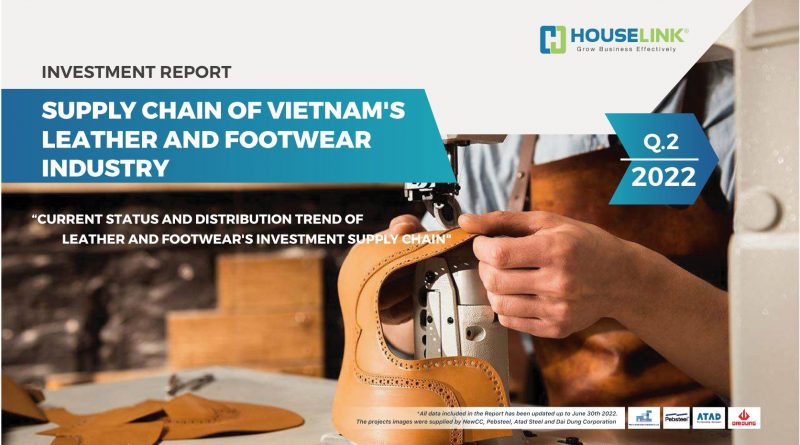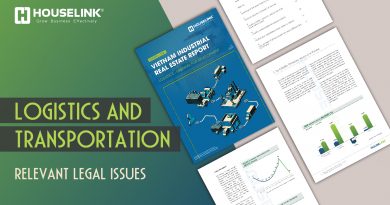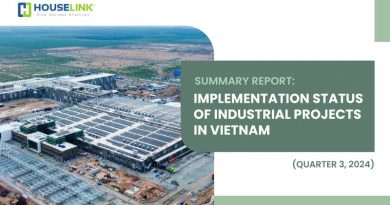Investment report – Supply chain of Viet Nam’s Leather and Footwear ” Current Status and Distribution trend of Leather and Footwear ‘s Investment supply chain”
After 2021, the world GDP growth noted a strong recovery after Covid 19 (5,8%) thanks to the work of promoting the vaccination campaign and restoring trade. In 2022, the world economy is affected negative dynamics of the Russia-Ukraine war regarding natural materials and high inflation. In addition, China’s work on epidemic prevention and control methods causes bottlenecks in the supply chain, causing GDP growth in 2022 to decrease to 3.2%.
The GDP growth rate of countries exporting a lot of shoes and leather products is predicted to decrease in 2022 but Viet Nam emerges as a bright spot when the GDP forecast in 2022 is assessed at a pretty good growth rate ( 6%) according to the World Bank.
The GDP growth rate of countries exporting a lot of shoes and leather products is predicted to decrease in 2022 but Viet Nam emerges as a bright spot when the GDP forecast in 2022 is assessed at a pretty good growth rate ( 6%) according to the World Bank.
The bright spot of the footwear import market is the light recovery in import value in 2021 of some significant import markets such as the US, EU, and Japan. In particular, the US footwear import market in 2021 increased by only 2% compared to 2019 (the epidemic was not yet outbreak) but increased by 33% compared to 2020. Other markets recorded a slight increase.
China is still the leading exporter of footwear products in the world, followed by Vietnam, Indonesia, Germany, and Turkey. In 2021, there is a slight increase in exports in most countries.
Factors affecting investment in the Leather and Footwear industry in Viet Nam
Leather and Footwear is one of the industries that use a lot of labor, so the labor force is always a painful issue, especially in recent times when the labor in this industry is gradually shifting to other industries with higher income or switching completely to another type of labor, or return to their hometown. In the survey of the General Statistics Office (GSO) with enterprises producing the footwear industry, the factor of labor shortage accounted for 44,6%.
Vietnam has signed 15 FTAs, including many important partners such as EU, Japan, Korea, Australia, China, UK and 2 agreements were in the process of being negotiated with Israel and the EFTA. The opportunity of Vietnam’s Leather and Footwear industry when signing these agreements is to increase market share, and profit, and expand the market. With the agreements that Vietnam has signed with countries around the world, Vietnam’s footwear exports will enjoy great incentives when the export tax rate is sharply reduced from 3.5-57.4% to 0%, opening great opportunities for export growth for the Leather and Footwear industry.
The machine in the Leather and Footwear industry is mainly imported from China and Taiwan (more than 90% value of imported machinery). Besides, for many years, maintain the amount of imported machinery from Korea but with less value. The industry that supports the production of machines dedicated to the footwear industry was still underdeveloped, necessary machines still had to import.
Status of investment projects in the Leather and footwear industry
FDI investment in the Leather and Footwear industry was trending decreased, in which the South is the key investment area
From 2013 till now, the South attracted almost newly FDI Leather and footwear industry projects (with more than 75% investment registered capital and 65% number of projects concentrated in this area). Next, northern also attracted a certain amount of registered capital to invest in the Leather and footwear industry (24%). Meanwhile, central almost undeveloped and attracted many projects, and registered capital was decreasing by year.
As we can see, Southern was the key to attracting investment in the footwear industry, footwear projects distributed in the southern were very diverse and gradually improve the supply chain of the whole industry. As noted by us, in 6 months of 2022, Vietnam started to recover in terms of attracting investment projects compared to the same period in 2021 but the scale of the projects was still modest. It can be seen thatleather and footwear projects tended to invest a lot in the fourth quarter of every year. So that Vietnam was likely to continue to attract more quality projects in the coming quarters.
Looking at the trend of attracting newly FDI in the industry from 2013 till now, we can see that recently, the amount of newly FDI investment capital in the Leather and Footwear industry has tended to decrease in both the number of projects and the value of registered capital, especially in Southern. But through the analysis chart, we believed that Dong Nai continues to be the investment bright spot of the leather and footwear industry when the number of projects decreased, but the scale of investment capital remained at a high level compared to other provinces.
Investment capital mainly comes from East Asia
According to HOUSELINK data, after verifying the origin of investment capital in the Leather and Footwear industry, we found that the investment capital that accounted for the most in newly FDI projects in the Leather and Footwear industry from 2013 until now came from Taiwan (more than 37%), after that was China, Korea and HongKong. The change over the years of this investment was not too big, the investment market of Leather and Footwear industry in Vietnam still mainly came from East Asian countries showing that the gradual shift of projects in the industry from these countries to Vietnam still tends to maintain.
Supply chain investment in the Leather and footwear industry under newly FDI capital
According to the data we collected, tested and analyze in a total of more than 600 newly FDI projects investing in the footwear industry from 2013 till now, there were about 46% of investment projects with the production of raw materials and accessories, 44% of Processing projects and only about 11% of projects on supporting industries. Among the investment projects in the production of raw materials, secondary materials such as shoe soles, insoles, accessories, toecaps, and shoe surfaces,… accounted for a large proportion. Primary materials such as fabric, leather, and plastic accounted for a small percentage. About supporting industry, mainly mold and packaging/label production. This showed that Vietnam had basically completed many stages in the supply chain of the footwear industry, businesses investing in Vietnam were very diverse and all attract big investors in each stage of the supply chain. In particular, we realize that secondary material projects always follow the flow of processing projects. When the processing project increases, the secondary raw material project will also follow soon.
Southern provinces had basically perfected the supply chain
Southern forms a supply chain with many big-scale projects. Especially in the southeast region, synchronized with the government’s plan for the development of the Leather and footwear industry. However, instead of provinces that were attracted to investment like Tay Ninh on the scale, in fact, we think that Long An is somewhat more prominent.
The supply chain of the Leather and footwear industry in Binh Duong is properly perfected, especially strong at secondary raw material production like Shoe soles, insoles, accessories. Besides, Long An and Dong Nai also had a pretty complete supply chain. This gave the provinces around these 3 provinces the opportunity to attract more leading projects in the industry.
Footwear projects were about to form in the future
Based on data of industrial projects with investment capital of more than 2 million USD (equivalent to 46 billion VND) in the form of foreign direct investment (FDI) and domestic direct investment (DDI) on HOUSELINK platform in the field of textiles; we collect, analyze data and make reports on projects that were under construction and were taking steps to prepare (Project preparation, design, contractor selection). All the projects were verified and authenticated by HOUSELINK.
In fact, it can be seen that the upcoming projects were mostly concentrated in the Southern (accounted for nearly 67% of the number of projects about to be deployed). 20% of the projects were about to be implemented in the Northern and about 13% of the projects were about to be implemented in the Central. It can be seen that the southern market continues to be an exciting market for footwear projects in the future. Especially, most of them are projects in the preparation stage, and have not yet conducted bidding and selected the main contractor.
Top 5 projects had the big amount of registered capital in 2022
This report is released in Vietnamese version, English version.









